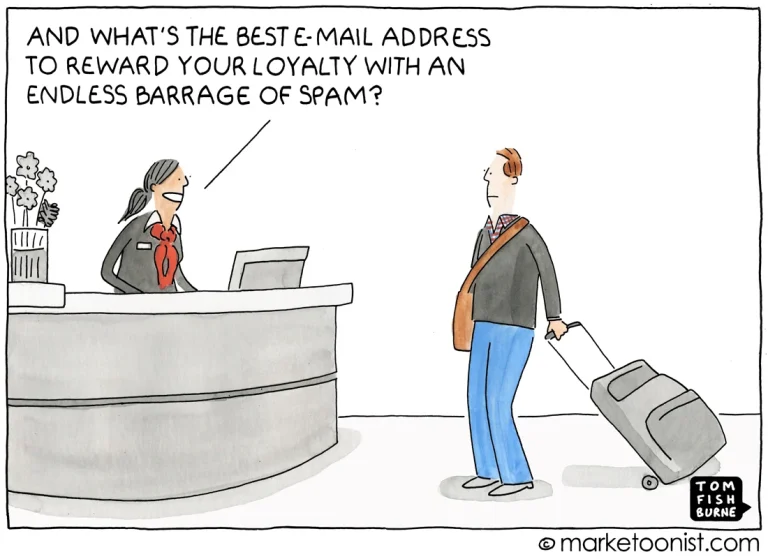
Digital advertising. It’s a landscape brimming with promise; the allure of reaching precisely the right audience at exactly the right moment, driving leads, boosting sales, and catapulting your brand into the spotlight. Yet, for many businesses, it feels more like a confusing, cash-draining maze than a clear path to growth. Why the disconnect? Often, it boils down to pervasive myths and misconceptions that steer strategies off course, leading to wasted budgets and frustratingly poor results.
We see it all the time. Smart business leaders, savvy in their own industries, fall prey to common digital advertising fallacies. It’s understandable; the space evolves rapidly, and there’s a cacophony of conflicting advice. But clinging to these myths isn’t just unhelpful – it’s actively costing you money and opportunity. Today, let’s pull back the curtain and debunk some of the most damaging digital advertising myths we encounter, replacing them with the strategic truths that actually drive success.
Myth #1: “Just Turn On Some Ads, and the Leads Will Magically Appear.”
Ah, the “magic button” myth. This is perhaps the most seductive and dangerous fallacy. The idea that simply launching a Google Ads or Facebook campaign, armed with a decent budget and a few keywords or interests, will automatically translate into a flood of qualified leads is wishful thinking. It ignores the intricate ecosystem required for advertising to truly work.
The Reality: Effective digital advertising is just one (crucial) component of a well-oiled marketing and sales engine. Think of your ad as the invitation to a party. The invitation might be compelling, but if the party location (your landing page) is confusing, unwelcoming, or doesn’t deliver on the promise, guests will leave immediately. Success requires:
- Deep Audience Understanding: Who exactly are you trying to reach? What are their pain points, motivations, and online behaviours? Generic targeting burns cash.
- Compelling Offer & Messaging: Does your ad speak directly to the audience’s needs and offer clear value? Is the message consistent from ad to landing page?
- Optimized Landing Experience: Is your landing page fast, mobile-friendly, easy to navigate, and designed specifically to convert? Does it build trust and clearly guide the user toward the desired action? This is where sharp Web Design and UX/UI expertise become non-negotiable.
- A Connected Funnel: What happens after the click or the form fill? Is there a clear lead nurturing process, perhaps powered by Marketing Automation, to guide prospects toward becoming customers?
Turning on ads without this supporting infrastructure is like shouting into a hurricane and expecting a nuanced conversation. It takes strategic planning across multiple disciplines.
Myth #2: “More Clicks Always Mean More Success.”
It’s easy to get caught up in the thrill of seeing click numbers rise. High click-through rates (CTRs) can be a positive indicator, suggesting your ad creative and initial targeting are resonating. However, clicks are ultimately a vanity metric if they don’t translate into meaningful business outcomes.
The Reality: Quality trumps quantity, every single time. Would you rather have 1,000 clicks from vaguely interested browsers who bounce immediately, or 50 clicks from highly qualified prospects genuinely exploring your solution, leading to 5 demo requests? The answer is obvious. Success lies in attracting the right clicks and ensuring those clicks convert. This requires:
- Robust Conversion Tracking: You absolutely must track what happens after the click. Are users filling out forms, making purchases, downloading resources, or calling your business? Without accurate tracking, you’re flying blind.
- Focusing on Down-Funnel Metrics: Look beyond clicks and CTR. Monitor cost per acquisition (CPA), return on ad spend (ROAS), lead quality, and ultimately, revenue generated. Data Analytics isn’t just nice-to-have; it’s the bedrock of smart advertising.
- Refining Targeting: High clicks with low conversions often signal targeting that’s too broad or attracting the wrong intent. Continuously refine your keywords, audience segments, and placement strategies.
Don’t chase clicks; chase conversions and tangible business results.
Myth #3: “Digital Advertising is ‘Set It and Forget It’.”

Launching a campaign is the starting line, not the finish line. The digital landscape is incredibly dynamic. Audience behaviour shifts, competitor strategies evolve, platform algorithms update, and what worked last month might be ineffective next month. Believing you can simply set up campaigns and let them run on autopilot is a recipe for diminishing returns and wasted spend.
The Reality: Digital advertising demands continuous monitoring, analysis, and optimization. It’s an iterative process of learning and refining. Think of it like tending a garden, not flipping a switch. Effective management involves:
- Regular Performance Review: Analyzing data frequently to understand what’s working, what’s not, and why.
- A/B Testing: Systematically testing different ad creatives, headlines, calls-to-action, landing pages, and targeting options to identify winners.
- Budget Allocation: Shifting spend towards top-performing campaigns and audiences and pausing or refining underperformers.
- Staying Current: Keeping abreast of platform updates, new features, and industry trends.
This ongoing Ad Management and Optimization is where significant gains in efficiency and effectiveness are made. It requires dedicated attention and expertise.
Myth #4: “You Need a Massive Budget to Compete and See Results.”
This myth often paralyzes smaller businesses or those new to digital advertising. Seeing competitors with seemingly endless budgets can be intimidating, leading to the assumption that playing the game requires deep pockets. While budget certainly matters, it’s far from the only factor determining success.
The Reality: Strategy and efficiency can often outperform brute force spending. A smaller, intelligently allocated budget focused on the right channels, targeting the most valuable audience segments with highly relevant messaging, can deliver a far better ROI than a large, unfocused budget sprayed across the digital landscape. Key elements include:
- Hyper-Focused Targeting: Don’t try to reach everyone. Identify your most profitable niche and concentrate your efforts there, especially initially.
- Strong Negative Keyword Strategy (for Search Ads): Actively preventing your ads from showing for irrelevant searches is crucial for preserving budget.
- Optimized Bidding Strategies: Leveraging platform tools and expertise to bid efficiently based on conversion goals, not just clicks.
- Compelling Creative & Offers: Standing out with relevance and value can capture attention even amidst bigger spenders.
- Starting Smart & Scaling: Begin with a focused test budget, prove the model, and then scale investment based on data-validated results. Our Strategy services often focus on maximizing impact regardless of initial budget size.
Myth #5: “My Niche/Industry is Too Specific/Boring for Digital Ads.”
We hear this particularly often in the B2B space or from companies in highly specialized industries. The assumption is that platforms like Facebook or even Google are too broad, or that their complex offerings can’t be effectively communicated in an ad format.
The Reality: Modern digital advertising platforms offer incredibly sophisticated targeting capabilities that allow you to reach even the most niche audiences. It’s less about the platform being “too broad” and more about knowing how to leverage its targeting tools effectively.
- LinkedIn Ads: The premier platform for B2B targeting based on job title, industry, company size, skills, and more.
- Google Ads: Beyond keywords, you can target based on custom intent audiences (people actively researching specific solutions), in-market segments, and remarketing lists.
- Platform Layering: Combining demographic, interest, and behavioral targeting on platforms like Facebook can pinpoint surprisingly specific professional groups.
- Content is Key: For complex B2B solutions, ads often drive traffic to valuable content (webinars, whitepapers, case studies) that educates and nurtures leads, rather than pushing for an immediate sale. This aligns perfectly with a strong Content Marketing strategy.
No industry is “too boring” if you understand your audience’s professional challenges and can offer valuable solutions through targeted, relevant advertising.
Moving Beyond the Myths
Digital advertising holds immense potential, but unlocking it requires moving beyond these common, costly myths. It demands a strategic, data-driven, and continuously optimized approach. It requires understanding that ads are part of a larger ecosystem encompassing your website, content, user experience, and sales processes.
By recognizing these fallacies and embracing the realities of smart digital advertising – focusing on quality over quantity, committing to ongoing optimization, leveraging precise targeting, and integrating ads within a broader strategy – you can transform your ad spend from a frustrating expense into a powerful engine for growth.
Which of these myths might be subtly sabotaging your advertising performance? Recognizing them is the first step towards building a more profitable digital strategy.



